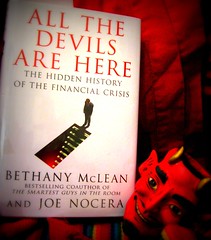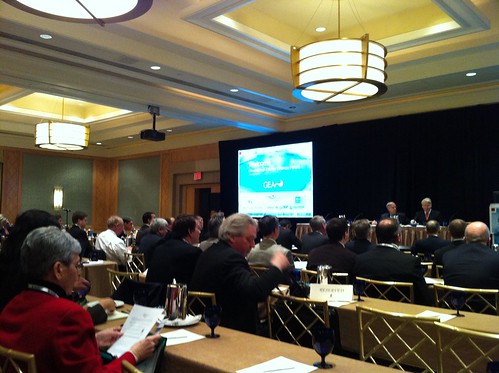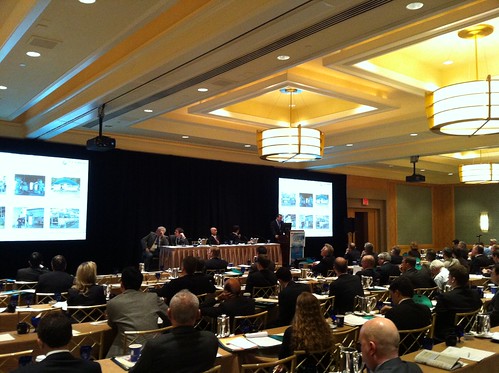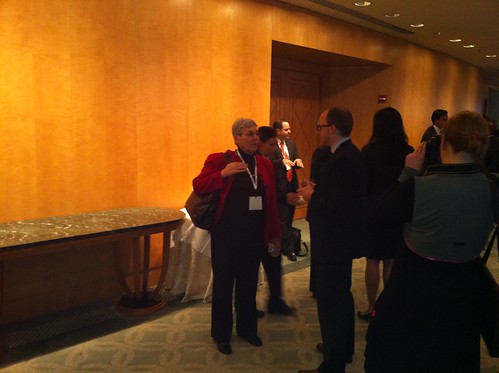Question by joa: can you understand this???? please help???
Hayes Lemmerz International, Inc. (Nasdaq: HAYZ) today reported financial results for its fiscal year ended January 31, 2007. The results were in line with preliminary results announced on March 16, 2007 and with guidance the Company provided to investors in December 2006.
For the fiscal year, the automotive and commercial highway wheels and components maker reported sales of $ 2.06 billion, up 5.1% from sales of $ 1.96 billion in the prior fiscal year. Earnings from operations were $ 4.8 million for fiscal 2006, compared with a year earlier loss from operations of $ 215.2 million, which included $ 185.5 million of goodwill impairment charges. Capital expenditures for the fiscal year were $ 80.8 million, down from $ 95.2 million a year earlier. The foregoing results exclude the suspension components business reported as discontinued operations, which had sales of $ 230 million, a loss from operations of $ 46.0 million and capital expenditures of $ 9.1 million.
The Company reported a net loss of $ 166.9 million for fiscal 2006, compared to a net loss of $ 457.5 million for fiscal 2005. The Company reported a loss from continuing operations of $ 120.9 million, compared with a loss from continuing operations of $ 287.1 million a year earlier.
Adjusted EBITDA for fiscal 2006 (including the suspension components business) was $ 188.6 million, up 7.3% from $ 175.7 million a year earlier. For the full fiscal year, Hayes Lemmerz reported free cash flow of negative $ 9.1 million, excluding the impact of the Company’s securitization program, an improvement of $ 71.6 million from a year earlier.
“Hayes Lemmerz is a much stronger company today than it was five years ago,” said Curtis Clawson, President, CEO and Chairman of the Board of Hayes Lemmerz.
“We have significantly decreased our dependence on U.S. markets, and continue to grow our international business, especially in Asia. By divesting non-core businesses and focusing on high growth/high return markets, we are continuing to execute our strategic business plan and our drive toward profitability and positive free cash flow. Sales to GM, Ford and Chrysler in the U.S., excluding discontinued operations, now account for only about 18% of global sales. Given the extremely difficult conditions in our marketplace, our results for 2006 are encouraging.”
As previously announced, as part of its continuing profit-enhancing initiatives, the Company completed the sale of two aluminum suspension components plants in February 2007. “These divestitures further reduce our dependence on the North American automotive market and free us from a very capital-intensive business,” said Mr. Clawson.
“Our new business wins point the way toward our future. We won over $ 575 million in annualized sales in 2006, of which 75% is international business,” Mr. Clawson said. “We continue to win with Japanese and Korean manufacturers, including Toyota, Hyundai, Nissan and Honda, both in the U.S. and internationally. We continue to win new business with our European partners, and in the U.S. markets our new business wins diversify our product mix with more crossover and passenger vehicles,” he said.
As previously announced, the Company�s board of directors has approved a rights offering for existing shareholders, for up to $ 180 million of common stock. Proceeds will be used to repurchase the Company�s 10.5% Senior Notes. The offering must be approved by shareholders at a special meeting scheduled for May 4, 2007. “By raising new equity capital and retiring high-cost debt, we are de-leveraging, strengthening our balance sheet and significantly improving free cash flow,” Mr. Clawson commented.
For the full fiscal year 2007, Hayes Lemmerz expects to achieve sales of about $ 2.1 billion, Adjusted EBITDA of approximately $ 195 to $ 205 million, positive free cash flow (excluding securitization impact) and capital expenditures of approximately $ 85 to $ 90 million.
Conference Call
Hayes Lemmerz will host a telephone conference call to discuss the Company’s full fiscal year 2006 financial results this morning, at 10:00 a.m. (ET).
To participate by phone, please dial 10 minutes prior to the call: (888) 295-5935 from the United States and Canada; (706) 758-0212 from outside the United States. Callers should ask to be connected to Hayes Lemmerz earnings conference call, Conference ID # 2107451. The conference call will be accompanied by a slide presentation, which can be accessed through the Company’s web site, in the Investor Kit presentations section at http://www.hayes-lemmerz.com/investor_kit/overview/presentations/www-presentations.html.
CONSOLIDATED STATEMENTS OF OPERATIONS
CONSOLIDATED BALANCE SHEETS
CONSOLIDATED STATEMENTS OF CASH FLOW
Hayes Lemmerz International, Inc. is a world leading global supplier of automotive and commercial highway wheels, brakes and powertrain components. The Company has 30 facilities and approximately 8,500 employees worldwide.
This press release shall not constitute an offer to sell or the solicitation of an offer to buy any securities, nor shall there be any sale of securities in any state in which such offer, solicitation or sale would be unlawful prior to registration or qualification under the securities laws of any such state. The Rights Offering will be made only by means of a prospectus. When available, copies of the prospectus may be obtained from Hayes Lemmerz International, Inc., 15300 Centennial Drive, Northville, Michigan 48168, (734) 737-5000, Attention: Corporate Secretary.
Use of Non-GAAP Financial Information
EBITDA, a measure used by management to measure operating performance, is defined as earnings from operations plus depreciation and amortization. Adjusted EBITDA is defined as EBITDA further adjusted to exclude asset impairment losses and other restructuring charges, reorganization items and other items. Management references these non-GAAP financial measures frequently in its decision making because they provide supplemental information that facilitates internal comparisons to historical operating performance of prior periods and external comparisons to competitors� historical operating performance. Institutional investors generally look to Adjusted EBITDA in measuring performance, among other things. The Company uses Adjusted EBITDA to facilitate quantification of planned business activities and enhance subsequent follow-up with comparisons of actual to planned Adjusted EBITDA. Free cash flow is defined as cash from operating activities minus capital expenditures plus cash from discontinued operations and the sale of assets. Management uses free cash flow to identify the amount of cash available to meet debt amortization requirements, pay dividends to stockholders or make corporate investments.
Forward Looking Statement
This press release contains forward-looking statements with respect to our financial condition and business. All statements other than statements of historical fact made in this press release are forward-looking. Such forward-looking statements include, among others, those statements including the words “expect,” “anticipate,” “intend,” believe,” and similar language. These forward-looking statements involve certain risks and uncertainties. Our actual results may differ significantly from those projected in the forward-looking statements. Factors that may cause actual results to differ materially from those contemplated by such forward-looking statements include, among others: (1) competitive pressure in our industry; (2) fluctuations in the price of steel, aluminum, and other raw materials; (3) changes in general economic conditions; (4) our dependence on the automotive industry (which has historically been cyclical) and on a small number of major customers for the majority of our sales; (5) pricing pressure from automotive industry customers and the potential for re-sourcing of business to lower-cost providers; (6) changes in the financial markets or our debt ratings affecting our financial structure and our cost of capital and borrowed money; (7) the uncertainties inherent in international operations and foreign currency fluctuations; (8) our ability to divest non-core assets and businesses; (9) the risks described in our most recent Annual Report on Form 10-K and our periodic statements filed with the Securities and Exchange Commission; and (10) our ability to consummate the previously announced rights offering. You are cautioned not to place undue reliance on the forward-looking statements, which speak only as of the date of this press release.
Contact:
Marika P. Diamond
Hayes Lemmerz International, Inc.
(734) 737-5162
HOME | INVESTOR KIT | PRESS KIT | CAPABILITIES | PRODUCTS | LOCATIONS | ABOUT HAYES
Contact Hayes Lemmerz. � 1998-2007 Hayes Lemmerz International, Inc. All Rights Reserved.
Subject to Acceptable Usage Policy
Best answer:
Answer by pimpcess
i wish i could help you but sorry i dont get this=[
What do you think? Answer below!



















